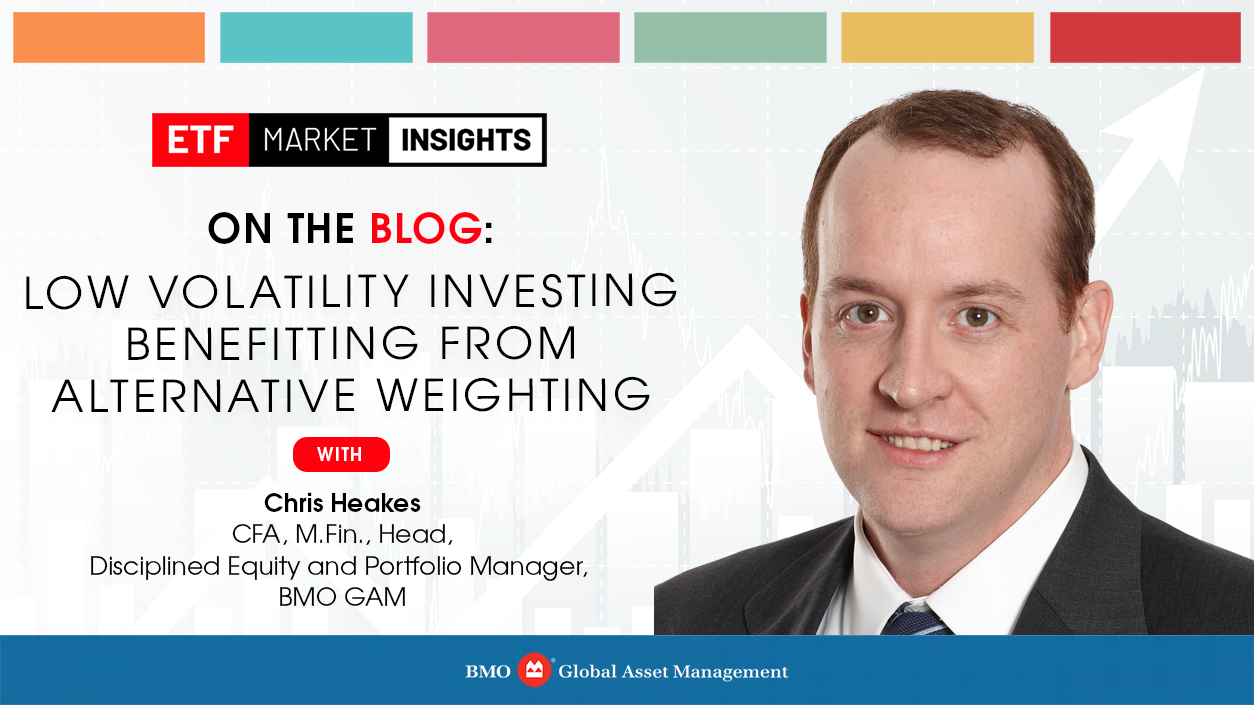
Most investors look to equities to provide the primary growth component of portfolios, and for good reason, the S&P 500 has returned an average 10.9% annualized over the past 50 years[1]. However, while the attraction of long-term growth is there, the drawback, as most investors know, is risk and volatile markets, such as the collapse of the Information Technology (IT) bubble in 2001, or the great financial crisis of 2008.
What is Low Volatility Investing?
Low Volatility investing is an approach which attempts to achieve the benefits of equity investing (upside return), while mitigating the inherent risk within equities. A soundly constructed low volatility Exchange Traded Fund (ETF) will generally achieve this by overweighting defensive stocks (using some measurement of risk – at BMO, low volatility ETFs use Beta as a measure) as well as overweighting traditionally defensive sectors such as Consumer Staples and Utilities, while underweighting more aggressive stocks and sectors, such as Energy and Materials.
By embracing a methodology that is different from broad indexes, low volatility strategies fall into a category of ETFs we call Factor ETFs or Smart Beta ETFs (the terms are interchangeable). In this sense Low Volatility strategies seek to preserve more capital (relative to broad markets) when markets are volatile, due to the weighting to defensive stocks.
How do Low Volatility ETFs Perform?
Classic finance theory supposed a relationship between return and risk. All things being equal, an investor should get more return, for assuming more risk (and vice versa). However, the concept of the “low volatility anomaly” comes from the empirical observation that this relationship doesn’t hold true in practice. Lower risk stocks generally have as good, if not better returns than higher risk stocks.
How can this be the case? Investors, or perhaps more accurately, traders, often chase higher-risk stocks, which to their detriment often don’t live up to expectations. No better example is there than the recent meme-stock behaviour, where a social-media organized horde chased returns on various small cap stocks, in the often misguided “shoot for the moon”. Low volatility investing is the opposite of meme-stock investing. It’s about winning by not losing. Batting for singles and doubles, but not going for home runs and striking out. Keeping the ball in the fairway… and on and on. A good low volatility strategy can deliver the benefits of equity investing over the long period, while also providing better cover and portfolio protection, when the markets aren’t working.
It’s beyond the scope of this blog post to get into the plethora of academic research around the low volatility anomaly, but for those interested readers, an article linked on the CFA website.
What are the risks of low volatility investing?
Simply put, the different weighting methodology can both work for, and against, the investor, particularly in the short term. Higher risk stocks will enjoy their days in the sun at times, and low volatility investors may lag, in these exuberant style markets. Like other factor investing strategies (value, momentum, etc.), performance is generally best analyzed on the long-term, which is to say through business cycles. Lastly, low volatility strategies tend to be overweight more interest-rate sensitive stocks, so in periods of interest rate increases, this may pose a headwind to the overall strategy.
In the current market, where we continue to see the ever-present nature of risk – seeing the challenges of a higher-inflation rate environment, despite Tech’s stunning advance in 2023 (Nasdaq up 45% YTD1). a portion of the portfolio also focussing on low volatility may help investors manage risk, as we continue to move through the cycle.
[1] Source: Bloomberg, as of July 31, 2023.
Disclaimer:
Commissions, management fees and expenses (if applicable) may be associated with investments in mutual funds and exchange traded funds (ETFs). Trailing commissions may be associated with investments in mutual funds. Please read the fund facts, ETF Facts or prospectus of the relevant mutual fund or ETF before investing. Mutual funds and ETFs are not guaranteed, their values change frequently, and past performance may not be repeated.
For a summary of the risks of an investment in BMO Mutual Funds or BMO ETFs, please see the specific risks set out in the prospectus of the relevant mutual fund or ETF. BMO ETFs trade like stocks, fluctuate in market value and may trade at a discount to their net asset value, which may increase the risk of loss. Distributions are not guaranteed and are subject to change and/or elimination.
BMO Mutual Funds are offered by BMO Investments Inc., a financial services firm and separate entity from Bank of Montreal. BMO ETFs are managed and administered by BMO Asset Management Inc., an investment fund manager and portfolio manager and separate legal entity from Bank of Montreal.
Changes in rates of exchange may also reduce the value of your investment.
®/™Registered trademarks/trademark of Bank of Montreal, used under licence.



















































